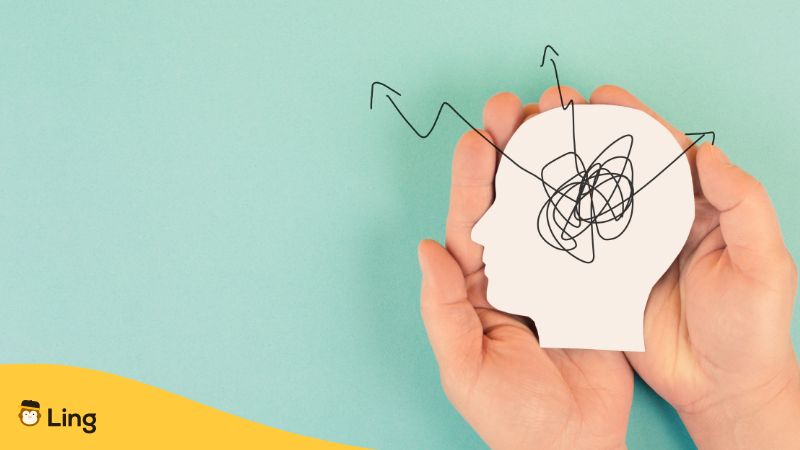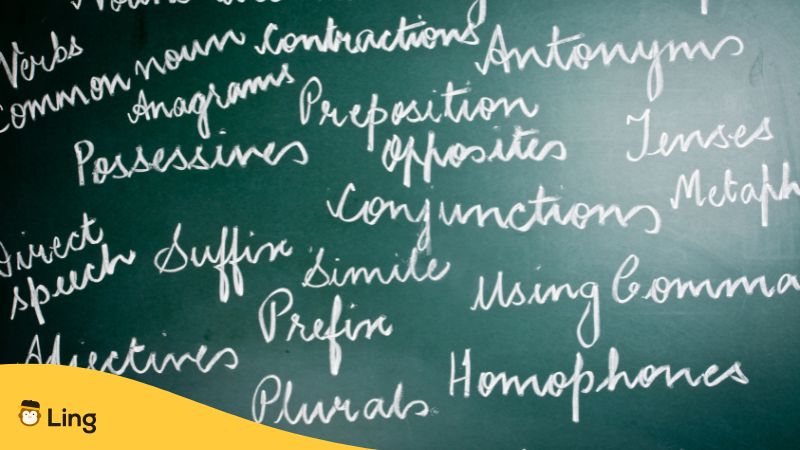If you’re an aspiring polyglot and an avid language learner who takes every opportunity to enhance your learning experience, you might have tried quite a good number of methods or other learning and retention techniques out there. From spaced repetition and language immersion to task-based and natural approaches, you perhaps tried to integrate some of them into your learning strategy to achieve your goal faster.
But did you notice that it is almost always the same set of language skills that are targeted with these methods? I did.
Listening, reading, and speaking are always the skills at the forefront of language learning goals. Although I do believe that methods that promise fluency in just a few weeks by learning through extensive listening and immersion in daily conversations do work (to some extent), I also believe that they only partially cover one side of what a learner needs for a well-rounded learning experience and to achieve proficiency.
One often overlooked yet profoundly efficient tool that can enhance your language learning journey and propel it forward is writing. Or, to be more specific, handwriting.
In our increasingly digital daily lives, where keyboards and touchscreens have become our primary tools for learning, we tend to forego writing. We don’t need to write these days since everything can be typed.
But I came to realize that sometimes, some of the most basic skills, the ones we acquired during childhood and started to neglect once we became adults, can be real game changers. This is particularly the case when learning a language.
In fact, writing in language learning plays an important role in harnessing our kinesthetic memory, the memory associated with physical movement, to achieve better language proficiency.
In this article, we’ll delve into the relationship between handwriting and kinesthetic memory, unveiling how this dynamic duo can help you learn languages more effectively.
Keep on reading!
Exploring The Connection Between Writing, Kinesthetic Memory, And Language Learning
1. Language Learning, The Brain, And Cognition
Embarking on a new language learning journey is a pathway filled with challenges. To be more specific, learning a language is a complex process that requires engaging various cognitive processes and frameworks.
Language learning is, from a linguistics and educational perspective, different from language acquisition.
Contrary to children who acquire their mother tongue by intuitively drawing connections between sounds and corresponding meanings, a process with which they are able to become bilingual, the process for second and foreign-language learners differs.
Instead of intuition and habits, language learners need to consciously deploy efforts to learn the language because they “install” new linguistic components to their existing linguistic framework.
To learn a language, you’ll, therefore, need more time and energy since you’re building a new structure over a preexisting and solid one. This is precisely why learning a new language requires engaging multiple senses and interrelated cognitive functions.
2. What Are The Cognitive Factors In Language Learning?
Cognitive functions are the mental processes (or factors) involved in acquiring knowledge, processing information, and reasoning. Various cognitive factors affect the language learning process. Some of them even play a crucial role in it, like memory.
Learners generally engage two types of memory when they study a language.
If you can visualize the things you learned behind closed eyes, then you might have visual memory. On the other hand, if you are better at recalling the sounds of what you learn, that usually means that you have an auditory memory.
Kinesthetic memory is also an important type of memory intervening in the language learning process, but one that is often neglected, especially by adult language learners.

3. The Science Behind Kinesthetic Memory
But what is kinesthetic memory exactly?
Simply put, kinesthetic memory refers to the brain’s ability to remember muscular movements. With time and constant repetition, these muscular movements become embedded in our body’s memory, and we don’t need conscious efforts to remember them while moving.
We rely on our kinesthetic memory more than we might think. Indeed, when we accomplish simple daily tasks, our muscles move without needing to think about these movements. We do it unconsciously because our muscles become, with time, used to moving in certain ways.
We acquire many of these automatic movements during our childhood by imitating the movements of the adults around us. In other words, we learn some of these movements unconsciously and incorporate them into our motor or kinesthetic memory.
4. How Does Kinesthetic Memory Affect Learning?
Years of studies related to cognition and learning have led to establishing kinesthetic memory as a type of memory that learners engage in their learning. Indeed, many learners rely (consciously or unconsciously) on their muscle memory to remember knowledge associated with movements made in the moment of learning. These movements become embedded within the information they acquire and become an integral part of it.
Today, we often see kinesthetic memory-based methodologies applied to young language learners because activities relying on this method are often physical and dynamic. To learn a language, children can use toys, role play, and other fun tools and games that require their bodies to move.
This is probably why, as adult learners, we tend to forego the use of kinesthetic memory skills when learning a language. Some activities might seem “childish” and our time and spaces are typically not compatible with learning techniques that require these two things. Thus, when adults learn a language, they often exclusively engage their visual and auditory memory skills.
However, we have long been using our kinesthetic memory for learning without even noticing. Indeed, taking course notes, jotting down ideas for projects, and all the writing that we’ve been engaging in since being in school is a form of kinesthetic learning.
This is exactly what can help us learn a language faster and more efficiently.
Writing In Language Learning
So, why and how can writing help us achieve language proficiency?
As mentioned before, our kinesthetic memory relies on our brain’s ability to retain movements. And what does handwriting consist of? That’s right, movements!
Handwriting involves a succession of various movements, small gestures, and carefully coordinated strokes, loops, curves, dots, and bars. Therefore, when we write, we train our muscle memory to remember what we learn through these movements.
Writing actually plays a major role in our first language acquisition.
You must probably remember the writing practice textbooks that you needed to fill out for homework, right? These textbooks (that you perhaps hated) did help you master your mother tongue on a deeper level.
Thus, just as we did when practicing our mother tongue when we were younger, it is possible for us, as adults, to master a foreign language more comprehensively by relying on handwriting, whether using paper or tablets, as a kinesthetic memory facilitator.
So, which parts of a language can handwriting help you acquire more effectively?

1. Vocabulary Acquisition
Remember when you had to write down dictated sentences or fill in the blanks of exercises to learn vocabulary and word spelling at school? You did not know this at that time, but with the movements of your hand, you were training your brain to recognize words and their spelling.
The same “technique” can be applied when you’re learning a language today. Writing in the language you are learning will help you with vocabulary acquisition and retention. Not only that, but it will also help you acquire the correct spelling of words.
Since writing trains your kinesthetic memory, your gestures coordinate with your brain to form strong associations between what you are writing and the meaning of what you write. In other words, handwriting allows you to encode information in your long-term memory.
Therefore, if you’re trying to learn a language, do try to incorporate writing in your daily vocabulary learning sessions. These activities can vary depending on the writing system of the language you’re learning.
If you learn a language that uses the Latin alphabet, assuming that your mother tongue uses a Latin-based alphabet, you can dedicate a section of your notebook to writing phrases or short paragraphs in which the word you want to learn is repeated. This way, you learn the word, its spelling (if it changes in the sentence), and the context in which it is used.
For languages that use different writing systems, such as Chinese or Arabic, what I personally like to do is to use what I like to call the “whiteboard technique.”
It’s very simple. If you have a small whiteboard or any laminated sheet on which you can write with a whiteboard marker, write down the characters, letters, or words you want to learn, erase, and repeat.
The challenge is to gradually be able to write them without looking at the model you have. This will allow you to remember the strokes and loops and their direction as well, more precisely, and you’ll train your brain to remember the movements of your hand.
You can perfectly do it on paper, too. But dry-erase boards have some precious benefits. They make your pen glide more easily, which is great for characters that require precision, like Chinese, or letters that contain loops, like in Arabic. Plus, if you make a mistake, you can just erase it and try again! A great solution for perfectionists who have a hard time with errors!
2. Grammar And Syntax
While handwriting helps with vocabulary acquisition and retention, it also helps with acquiring correct grammar and syntax.
These two components are often the pet peeves of language learners. Since the grammatical system of our first language is already built in our cognitive framework, forging new grammatical connections in relation to new vocabulary is tricky.
Various language learning methods tried to make learning the grammar of foreign languages more intuitive and thus easier by relying on our various cognitive functions.
One of these methods is imitation, which essentially involves imitating language structures and grammatical concepts without trying to understand their inner workings.
Handwriting can help us acquire the initial structure of a foreign language by imitation, that is, by imitating correct samples of the language.
In this process, our kinesthetic memory gets involved because our muscles will remember the gestures we make when we copy these grammatical patterns. Our long-term memory thus gets unlocked through this process, and we incorporate these structures into the newly learned components of the language.
In short, handwriting can help us internalize new grammatical concepts without much effort.
When I learned English, which is not my first language, I used to copy some parts of my literature and history textbooks by hand because I tend to remember what I write better than what I read.
While I did have English grammar courses as well, a lot of the rules I learned did not stick that easily in my mind. In contrast, once I started to write my own texts and essays, I realized that I was able to use grammatical structures instinctively, without thinking too much about the way I should use them. Copying whole sentences and paragraphs thus helped me gain a kind of instinctive grammar.

3. Effective Language Skills And Better Fluency
Since a language comprises various interlocked components such as grammar and vocabulary, understanding how to use them efficiently can take time.
It is quite a well-known fact that the more you practice something, the more proficient you become in grasping its complexities. The same can be said about language.
Through regular writing practice, language learners can put their thoughts more effortlessly on paper and achieve a more natural flow in their writing.
By engaging in repeated writing activities, your brain becomes familiar with the structures and patterns (as a whole) of the language that you learned through gestures, and this will reduce your hesitation, sharpen your skills, and increase your proficiency, not only in your writing but in your speaking as well!
Yes, you read right! Writing can help you speak the language you’re learning better. How, you say? Well, it’s quite simple.
If you often feel hesitant and unsure as to which word or sentence structure you can use or which grammatical rule should intervene in a specific context, writing will help you overcome this by structuring your thoughts and creating a sort of basis that your brain will use as a reference when you speak.
Therefore, your speech production will flow more easily and coherently. It is possible to say, then, that writing is not only a kinesthetic memory trigger but also a skill that engages your brain’s ability to reason and focus.
Other Aspects Of Language Learning That Writing Skills Help With
1. Personalization And Ownership Of The Language
In addition to all the linguistic skills it can help you develop, handwriting can also impact your learning journey on a personal level.
I don’t know if you’ve ever felt this, but as a language learner, you are in your own learning zone, especially if you’ve reached an intermediate level. You don’t master the language enough to be able to fully immerse yourself in it like an advanced learner or a native speaker, but you’re not a complete beginner either.
This learning zone or bubble, is not restrictive despite what you might think. And it’s not a sign that you’re not progressing. Rather, it’s proof of you taking ownership of your learning and of the language itself. And writing will help you forge an even deeper connection with this language.
How?
Writing by hand is already a form of personalization. The way you trace letters and characters is infused with your personal touch. You form a deep connection with the language because you add something of your own to it.
Writing also helps you develop your writing voice. Although a language can appear to be static because it obeys sets of rules that cannot be bypassed, it is flexible enough to let you develop your own style of language production.
Finally, I personally think that writing can shape your thoughts and vision of the world through the language you’re learning. Because languages have their own writing systems, some of them differ from the ones we are familiar with. This can affect your cognition and cause a subtle shift in the way you perceive the inner working of the language in relation to your environment.
2. Avoiding Fossilization
Learning a language is not a smooth sailing journey. You might hit a plateau one day. This phenomenon, which can be unsettling and frustrating, is a learning stage called fossilization. It refers to the lack of progress in the learning process.
Fossilization often occurs because learners develop interlanguage, which is an evolving linguistic system that mixes both linguistic characteristics from your mother tongue and your target language. Some aspects of the interlanguage become “fossilized”, or fixed, and form bad linguistic habits that can make it harder for you to improve.
Integrating writing into your language learning pathway can help you avoid both stalling in this stage and developing incorrect language habits. Since writing is a powerful tool to acquire both vocabulary and grammar as well as to improve your speaking skills, it ensures that you stay in a constant progress loop.

Writing For Language Learning In This Digital Age?
Screens surround us; that’s a fact. And with the rise of digital education, screens are steadily replacing paper. While schools still use paper, textbooks, and notebooks, recent events like the 2020 pandemic led education professionals to rethink some teaching and learning practices, which resulted in an increased adoption of digital technologies in the classroom.
In workplaces, it goes without saying that most jobs require digital skills, which makes employers, employees, and freelancers rely exclusively on their laptops and tablets. Therefore, we write less and less.
However, a lot of learning platforms are becoming aware of the need to develop handwriting as a skill. In fact, several language learning apps, such as the Ling app, offer lessons for learners to develop their writing in the language they are learning from the very first lesson.
Moreover, even if the app you use to learn a language does not offer writing lessons, you can always add a writing session to each lesson you complete. This way, you ensure that you’re developing all the language skills you need.
A funny thing is that, even though we’re going increasingly digital, I noticed that notebooks, planners, and other stationery sets are trending on social media, promoting a type of lo-fi aesthetic lifestyle that many people like. If, like me, you’re obsessed with dotted and lined notebooks with cute or fun covers but do not use them at all, why not start putting them to good use in your language-learning journey?
And if you find writing on paper a bit of a hassle and prefer the gliding feel of screens, then you can still write on your phone, tablet, or your e-ink. Whichever way you prefer, the most important thing is to write, take advantage of your motor memory, and ink your way to proficiency!































































